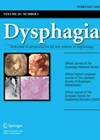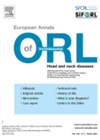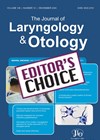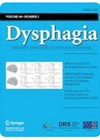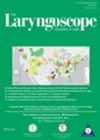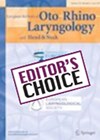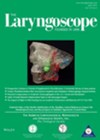
Journal Reviews
An otological cure for globus?
Globus pharyngeus is a common benign condition frequently encountered in ENT practice. Laryngopharyngeal reflux and psychological stressors are often considered to be contributory factors, but globus symptoms do not always respond to antacid medications. Such medications can also be limited...
Swallow toxicity score (DIGEST) and its clinical utility in oncology practice
The Dynamic Imaging Grade of Swallowing Toxicity (DIGEST, graded from 0–4) was developed as a tool for clinicians to grade dysphagia from modified barium swallow studies (MBSS). The purpose is to provide a common terminology for adverse events of pharyngeal...
Does frailty lead to changes on quantitative measures of videofluoroscopic swallowing assessment?
In recent years, studies have considered the relationship between frailty and swallowing and demonstrated that decreased skeletal muscle mass correlates with decreased swallowing function. This study investigated this relationship by using quantitative measurement of three individual components of swallowing assessed...
The use of 3D videos to improve patient engagement with compensatory swallowing strategies
Patients with dysphagia are often asked to use compensatory techniques or manoeuvres to facilitate safe swallowing. For example, they may be taught to do a supraglottic swallow to minimise aspiration or a specific postural adjustment to support bolus flow. These...
Tonsillectomy and the environment
The authors compared the carbon footprint of various techniques used for subtotal tonsillectomy. The techniques included radiofrequency ablation, coblation and cold steel with bipolar diathermy. All medical equipment was reported and their carbon emissions in eCO₂ calculated. Cold steel with...
Globus, reflux or perhaps both?
We rarely do an ENT clinic without encountering a patient with persistent or recurring feeling of a lump or foreign body in the throat. We are also familiar with patients dreading to hear the C word after the endoscopic examination...
A faster way to manage patients with swallowing disorders with enhanced role of speech and language therapists
Allied health professionals (AHPs) make up the third largest clinical workforce in the NHS. They represent a diverse group of registered professions who play a vital role in the health service, working across various settings and with all age groups....
Chin up, doc! A few simple manoeuvres could make all the difference in FNE
Flexible nasendoscopy (FNE) is an ENT surgeon’s bread and butter. It is integral and often considered superior to conventional radiography in the assessment of laryngeal and pharyngeal cancers. However, it is not as simple as sticking the camera in and...
In the United States, do people with dysphagia have a higher chance of being dysphonic?
Dysphagia and dysphonia can co-occur due to their shared anatomy and physiology. Previous studies have considered this relationship and determined that certain conditions, such as cancer, laryngeal impairments or neurological disorders, may lead to problems with both swallowing and voice....
Management of post-tonsillectomy bleeding with nebulised TXA
In the last 20 years, rates of adult tonsillectomy have fallen in the order of 50%. The flipside to this, is that the number of admissions of patients with acute tonsilitis is more than double the reduction in tonsillectomy rates....
What are the airway, voice and swallowing outcomes of a mucosal-sparing surgical approach to improving the glottic airway in bilateral vocal fold immobility?
Bilateral vocal fold immobility (BVFI) causes significant breathing problems as well as voice and swallowing difficulties. Surgical interventions aim to enlarge the glottic outlet by altering or removing glottic structures which improve breathing but often lead to worsening dysphonia and...
Do easier-to-swallow tablets improve medication adherence in people with dysphagia?
Swallowing tablets can be challenging for many people, but particularly so for those with a diagnosis of dysphagia. As a result, many medications are prepared in alternate formats including liquid, dissolvable or orally disintegrating tablets that dissolve on contact with...


